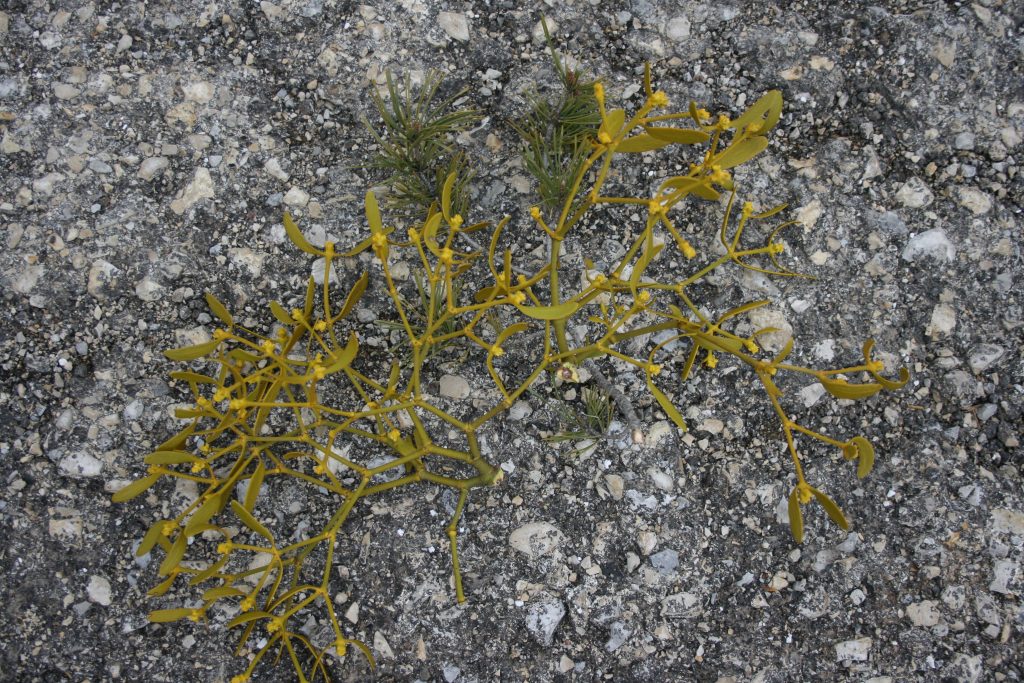By John David
Not an obvious topic for Advent, but bear with me, the connection will become clear. The Golden Bough is most famously the title of a book written by Sir James Frazer and first published in two volumes in 1890 [complete text available – vol. 1, vol. 2], subtitled ‘A study in Magic and Religion’. The book is a detailed exploration of comparative religion and, although much criticised by those who have studied the subject since, still reveals the deep-seated linkages between cultures and civilisations in matters of faith and superstition.

The Golden Bough exhibited 1834 Joseph Mallord William Turner 1775-1851 Presented by Robert Vernon 1847 http://www.tate.org.uk/art/work/N00371
Although the book begins with a reference to Turner’s painting of the same name, which itself represents the Grove of Nemi and the link to the legend of the priest kings of the grove, it ends with his exploration of mistletoe as the Golden Bough. It is the bough that Aeneas was instructed by the Cumaean Sibyll to take with him to gain entry to Hades in order to see his father. The story is told in Book 6 of Virgil’s Aeneid and it is Virgil who suggests the link by comparing the golden bough to mistletoe:
“Quale solet silvis brumali frigore viscum fronde virere nova…” (line 205)
Just as in the depth of winter the mistletoe blooms
In the woods with its strange leafage… [Translation: C. Day Lewis, 1952, Oxford University Press]
Mistletoe was also of great significance in Celtic mythology, for it neither grew in the soil nor in the air, it was of a tree and yet not a tree: such a paradox, much beloved of the Celts, meant that for anyone to place themselves under the mistletoe was to free them from restrictions or conventions. Hence its role in modern day Christmas decoration. It was that same paradox that features in Nordic legend, around the slaying of the god Baldur, for he could not be killed by anything that grew on the ground. But Loki fashioned an arrow from the wood of the mistletoe which proved fatal to the god.
But with such a weight of allusions and connections why would the mistletoe, known and sold in the UK as a green plant, be described as “golden”. It was with surprise that during an expedition looking for daffodils in Spain a few years ago, I saw a mistletoe growing on pine trees, with a distinctly yellowish hue. Excitedly I drew my co-travellers’ attention to the “golden bough”, much to their puzzlement but patiently the car was stopped and I rushed out to photograph the mistletoe.
Although this was Spain (Cumae is just outside Naples) and it is unlikely that Aeneas’s “Golden bough” was growing on pine trees, it is likely that something not dissimilar could have inspired Virgil’s lines. For those determined to have the botanical details, the mistletoe I saw and photographed was Viscum album subsp. austriacum which occurs only on pines and larches and is found in central Europe and here and there in southern Europe, but is not found in the Campania of Italy (see Portale della Flora d’Italia http://dryades.units.it/floritaly/index.php?procedure=taxon_page&tipo=all&id=329 ).
However, it seems to me more likely that Virgil was inspired by another mistletoe, Loranthus europaeus, which is commonly found throughout Italy, and occurs on oaks, and is remarkable for the hanging racemes of yellow berries (which Virgil mentions in line 207: “crocea fetu”) that stand out particularly when the leaves of the host tree have fallen (as do the leaves of the mistletoe, for this one is deciduous). The name in Italian is the same for both kinds, visco; vischio, sometimes qualified by quercino (oak), and it is possible that the Romans did not make a distinction either.


![Stefan.lefnaer [CC BY-SA 3.0 (https://creativecommons.org/licenses/by-sa/3.0)], from Wikimedia Commons](https://blogs.reading.ac.uk/crg/files/2018/12/Loranthus_europaeus_sl4w-225x300.jpg)
Pingback: #AdventBotany2018, Day 4: The Golden Bough — Culham Research Group « Herbology Manchester